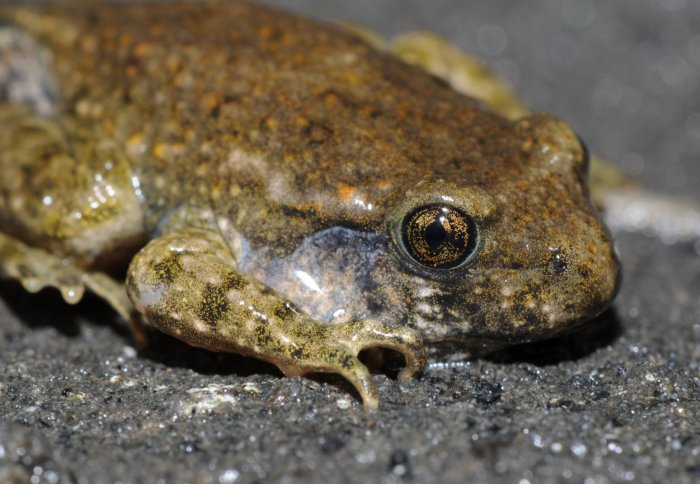Fungus "micropredators" protect amphibians from deadly disease
by Sam Wong

Photo: Dirk Schmeller
Waterborne microorganisms could help to save frogs and toads from a skin-eating fungus that threatens amphibians around the world.
Scientists have discovered that certain aquatic microbes, including single-celled protozoans and tiny animals called rotifers, can consume large quantities of the fungal spores that spread disease.
In experiments, fewer tadpoles became infected with the fungus in water that contained more of these microbes.
The study suggests that finding ways to increase the abundance of fungus-eating “micropredators” in amphibian habitats may help to protect populations at risk.
The research was carried out by an international team financed by the EU-funded Biodiversa network, led by Professor Matthew Fisher at Imperial College London, and the Royal Zoological Society of Antwerp.
Chytridiomycosis, a disease caused by the skin-eating chytrid fungus Batrachochytrium dendrobatidis, or Bd, has affected over 500 amphibian species worldwide. Thousands of frog, toad and salamander populations have been wiped out by the disease, and many species now face the threat of regional or global extinction as a result of this emerging infection.
When Bd becomes widespread in a community, it typically brings about a sharp decline in amphibian numbers, but some populations seem to remain stable even when the fungus has established itself.
To understand why, the scientists collected water samples from ponds and lakes in the Pyrenees and, aided by a pack of donkeys, brought them back to the lab for analysis.

Donkeys helped the researchers collect water samples from remote sites in the Pyrenees. Photo: Dirk Schmeller
Their experiments suggested that microscopic predators might explain why amphibian species are heavily affected by the chytrid fungus at some sites but not in others.
“The question we need to answer now is: can we alleviate the impact of chytridiomycosis in amphibian populations by creating the right conditions for the micropredators to flourish?” said Professor Fisher. “If so, that might give us a realistic strategy for preserving amphibians in Bd-infected areas around the world.”
The findings are published in Current Biology.
Reference: D.S. Schmeller et al. ‘Microscopic Aquatic Predators Strongly Affect Infection Dynamics of a Globally Emerged Pathogen.’ Current Biology, 20 January 2014.
Article text (excluding photos or graphics) © Imperial College London.
Photos and graphics subject to third party copyright used with permission or © Imperial College London.
Reporter
Sam Wong
School of Professional Development